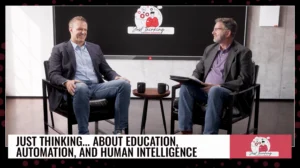Can AR and VR Revamp the Future for Antiquated Shop and Home Economics Classes?
A few decades ago, shop and home economic classes were a staple in every school. Although somewhat gender specific in their direction, these classes taught students the basics of living both in and out of the home. Boys were typically funneled into shop where they were exposed to hand and power tools, welding, sandblasting, painting, and taught to repair everything from small appliance motors to automobile engines. Girls in home ec classes were taught to cook nutritious meals, replace buttons and repair hems, write checks and balance bank accounts, and perform simple repairs around the house like replacing doorknobs.
These were practical courses that also applied core subject learning to real life experience. In kitchens, girls could use mathematics to downscale recipes or learn how the chemistry of ingredients changes when mixed together. Boys could apply similar core learning in shop, whether it was determining the correct size of a wrench to calculating torque to knowing the hazards of common chemicals used in mechanics and agriculture. These classes also taught focus, planning, safety, and the respect for tools and others while fostering teamwork and self-esteem.
But as the decades passed and technology advanced at the speed of light, school interests changed and square footage on campuses became prime real estate. Shop and home ec classes that weren’t disbanded completely were downsized drastically and/or rebranded—home economics was revamped into family and consumer sciences in the late 90’s. And with high stakes testing at stake, courses that were not core testing subjects were often neglected during budgeting. As a result, the workforce of the future is set to be inexperienced in fundamental life skills, unable to perform the easiest of tasks such as cooking a meal, mending a tear, replacing a car tire, or installing a bedroom light fixture.
Common with avid, lifetime sports fans, early exposure to a certain activity played in an elementary physical education class shaped their leanings toward a specific sport. But not everyone wants to be a doctor or a teacher or a baseball star. One child may want to pursue commercial welding or become a famous fashion designer. But without exposure to a welding shop or a sewing machine, a budding seamstress or tailor or future oil line supervisor will attend classes and even universities that may not be suitable to their true interests, wasting valuable teaching/learning time and funding. They may even go on to choose careers that don’t engage or mentally challenge them.
Further, statistically speaking, there is a greater chance that children are more likely to become employed as a tradesperson than ever becoming a professional sports player. And while skilled trades are undervalued by Americans, the demand for a skilled tradesperson has not withered. From sous chefs to diesel mechanics, applicants skilled in a specific craft are typically provided a choice of jobs with decent wages and accompanying perks. And the more skill, the fewer layers of hierarchy to deal with.
But with space constraints and budgeting issues, how can schools bring these fundamental life courses back into the classroom? Through the use of current technology, including smartphones, AI, AR and VR. These modern technologies offer innovative and realistic experiences to improve learning and capture the attention of todays plugged in generation.
In a recent CleverBooks study Augmented Reality (AR) and Virtual Reality (VR) in Education is Strategic, a technical high school class made up roughly of 23 students in the 16 year old range were asked to use AR and VR to create their own learning content. The student’s objective was to create as few paper notes and augment with AR and VR via inexpensive cardboard headsets and the use of smartphones and apps. The results were clear. The students successfully created content in small peer groups where they were able to take an active role that improved confidence and autonomy while developing new ICT skills through methods both creative and fun. Furthermore, the study indicates how the flexibility of augmented learning allows for applications in a wide range of subjects that can appeal to this last generation of learners, even children with special needs.
The Director of Career and Technical Education (CTE) for Florida’s St. Lucie Public Schools, Michael Carbenia, implemented augmented reality and virtual reality technology into his CTE classes over the past 12 months. According to him, “AR/VR in CTE allows me to have one single device where we can expose many more kids to different career options. In one day—in the same classroom—we can dissect an elephant, weld a beam, take apart a car, and dissect a human.”
For this Florida CTE director, AR and VR learning is cost- and space- effective, too. “I can cover that with one student or multiple students in 30 minutes. Without AR/VR it would be very expensive for me to provide all of these various models.” Mr. Carbenia touched on space requirements, saying, “They’re getting exposure to so many different things that [used to require] the wood shop, or home economics, or the automotive lab.”
Additionally, this modern form of teaching is making an impact on students as well. Mr. Carbenia remarks, “With AR/VR in our classes, I see students—especially the millennials, generation Zs—finding that the education system is keeping up with technology, and that I think keeps them coming.”
Companies that offer AR and VR systems for educational purposes are currently flooding the market, becoming less cost prohibitive while providing safe hands-on experiences that enhance learning while eliminating consumables and reduce training space. As a result, classes like shop and home ec that have been relegated to the back of the shelf for years are sure to make it back into mainstream education sooner rather than later. Currently, zSpace offers an Automotive VR Training System by GTA as well as a simulated welding program. And students can repair a robot, paint in 3-dimension, or cook in a virtual kitchen with the HTC Vive. In addition, today’s current AR and VR technology has the capability to conquer career-based gender stereotypes, making it more likely that modernized home ec and shop classes will be populated equally by both girls and boys.
Virtual and augmented reality along with other modern technologies allows students to do and learn things in a much faster, more efficient, and extremely accurate way than in the past, providing current generations with the advantages needed to succeed. And via industry supported content, AR and VR classes geared toward traditional home economics and shop instruction can provide students with the hands-on skills businesses and mankind need to face the challenges of today and tomorrow. With AR and VR technology, education possibilities are only limited by the imagination.








